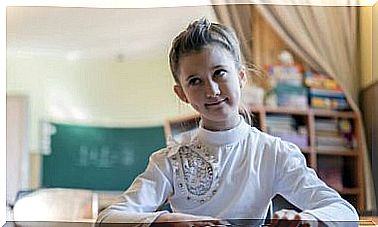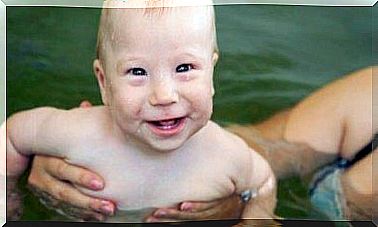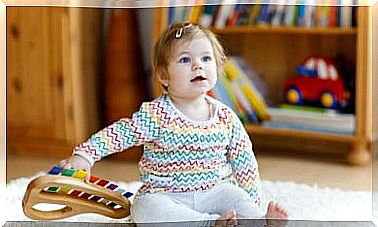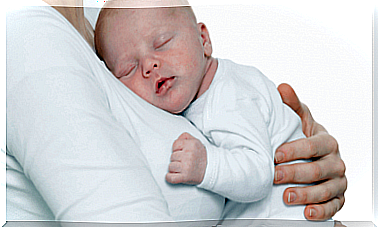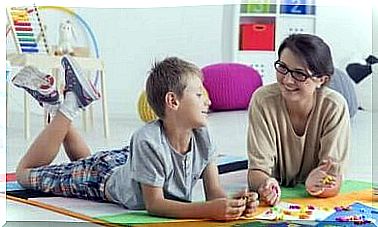The Most Common Problems In A Child’s Emotional Development

Certain types of emotional challenges are a normal part of human development, and every child experiences them at some point. However, when they get worse or repeat over and over again, they can cause problems. Today we talk about what are the most common problems in a child’s emotional development.
The most common problems in a child’s emotional development
A person’s emotions begin to develop immediately after birth, and the emotional bond formed between mother and child significantly benefits the child’s social and emotional development. Emotions and the way a child processes them become pillars of his or her personality. However, everyone experiences one or more emotional problems during childhood.
They are usually a normal part of a child’s development, but in some cases they are associated with various problems such as eating and sleep disorders, poor school performance, or difficulty maintaining social relationships. For this reason, it is important for parents to be vigilant in identifying, preventing, and treating problems in a timely manner.
Tantrums
A tantrum is an immature way to express anger, discomfort, or frustration. Outbursts are normal in children aged 1-4 years. The outburst of anger manifests as anger, screaming, and exaggerated crying . It is a form of communication by which a child expresses that his or her desires or needs have not been met. Outbreaks appear to occur in children aged 1 to 3 years, as the child is not yet able to control his or her emotions.

Situations that cause a tantrum
- If a child’s basic needs, such as hunger, thirst, or need for sleep, are not met immediately.
- The child needs to release the current or accumulated frustration, fear, or tension.
- When a child feels that something is unfair or he has not earned something.
- The child is obliged to do something, but the child does not want to do it or the child must stop doing what he or she likes.
At about the age of two, a child finds the power of tantrums. If a child organizes a scene of tantrum and you immediately meet the child’s needs, the child understands that he or she has a tool that allows him or her to manipulate your emotions to get what he or she wants. For this reason, it is not advisable to react to outbursts of anger due to attention or the demand to get something.
When the child has calmed down, tell the child that by getting angry, crying and kicking, the child will not get what they want. It is important to set boundaries for the child so that the child does not get through his or her will. Over time, the child will learn that the best way is to talk and communicate instead of starting to tease.
However, if your child’s tantrum is due to some unsatisfaction with a basic need, such as hunger, thirst, or fatigue, take the child in your arms to reassure him or her. Do the same if you find your child is scared or frustrated with something. First you need to find a connection to the child’s emotions, then guide the child’s behavior and look for the best solutions to the situation.
Jealousy
Jealousy is an irrational reaction that combines sadness, low self-esteem, and feelings of jealousy towards another person. This is a normal evolutionary reaction to certain changes in a child’s environment.
However, jealousy is not a significant problem if the feeling is conditional or temporary. However, if jealousy affects a child’s self-esteem, social and emotional development, or lasts for more than 5 years, it can cause anomalous behavior.
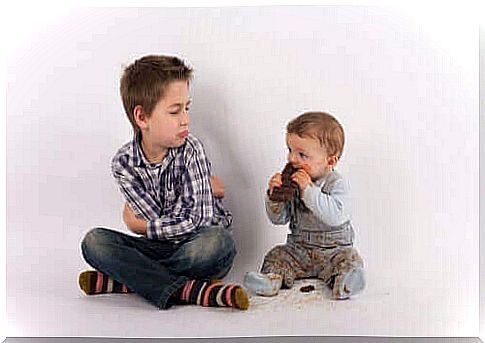
Jealousy can lead to behavioral problems such as aggression, uncertainty, or regression. In addition, it can cause an imbalance in human relationships, mistrust, stubbornness, or jealousy. The most common cause of jealousy in a child is a new sibling. A child may feel jealous if his needs are not met in the same way as before and the child no longer feels special.
The child may have fears or feelings that the parents no longer care about him. Such feelings are caused by the following situations, among others:
- Parents prefer one of their children.
- The child is overly dependent on the other parent.
- Feelings of insecurity and maladaptation.
In order to control or prevent a child’s jealousy, it is important for parents to strengthen the child’s self-confidence as well as give the child plenty of affection. It is also important to shape certain behaviors so that the child does not feel that the parents no longer care about him.
Regression
Sometimes a child’s normal behavior experiences changes. A child can regress and lose a skill they have already learned before. Other problems associated with the recession include watering the bed, talking childishly, or asking for a pacifier.
Regression can occur when a child is 3-4 years old. It is normal for changes to occur in a child’s environment that cause stress to the child. Recession is a defense mechanism to trauma, conflict, or emotional maladaptation. Therefore, it is important that parents do not get angry with the child if he or she experiences a regression. It is often momentary and a stage where the child seeks emotional balance.
On the other hand, it is important to find out the causes of the recession, as it can help the child. Parents should never be angry with the child, criticize him or her, or shame the child because of the recession. It is best to show the child solidarity, affection and dedicate more time to him.

The most common factors causing a recession
- Changes in childcare, such as a new caregiver or starting school
- Maternal pregnancy or birth of sibling
- Serious illness of a child or other family member
- Death of a family member
- Intra-family conflicts or parental separation
- Moving to a new home
Fears
Fears are part of a child’s normal emotional development. Fear is a kind of alarm system that helps a child avoid potentially dangerous situations. Fearful situations and things vary depending on the child’s developmental level.
For example, with age, some fears give way to new fears as the child has to adapt to changes in the world around him. These age-related fears tend to be transient and short-lived. However, for some children, they may turn into chronic and abnormal fears.
Age-related fears
- During the first year, fears are associated with powerful and unfamiliar stimuli, such as loud noises and unfamiliar people.
- Until the age of six, fears are associated with animals, muskrats, darkness, fantasy characters (such as witches or ghosts), disasters, and parental separation.
- From the age of six, a child may fear physical injury and ridicule.
- Later in life, it is common to fear illness or accidents, poor school performance, or conflicts with parents.
In general, physical fears, such as those about animals, storms, or injury, decrease with age, while social fears, such as being ridiculed, repelled, or speaking in public, increase.
If your child is experiencing the aforementioned problems in emotional development, there is no need to worry as they are part of the child’s normal development. You should respond to these problems gently and by showing your affection to the child. Excessive and overprotective expression of affection as well as lack of affection can impair a child’s psychological development.
